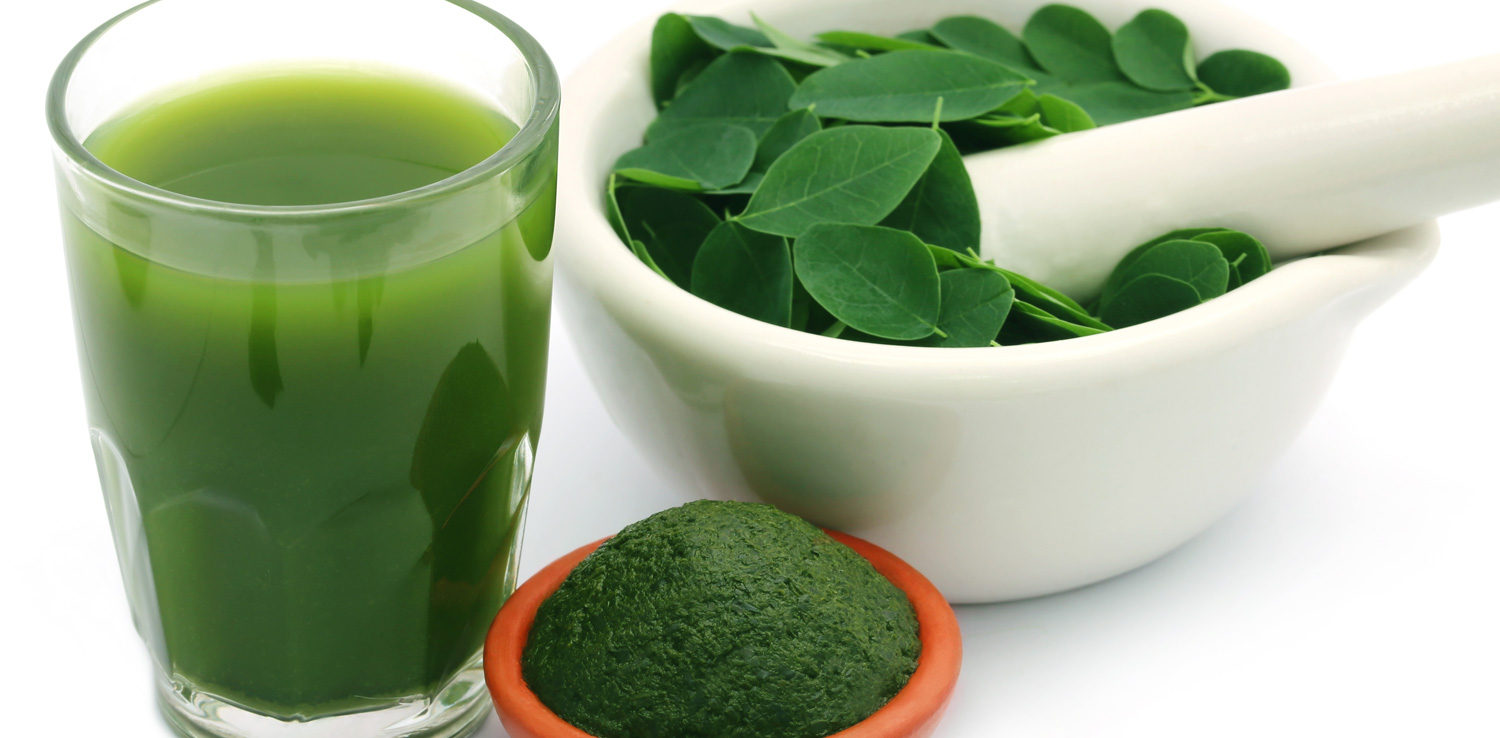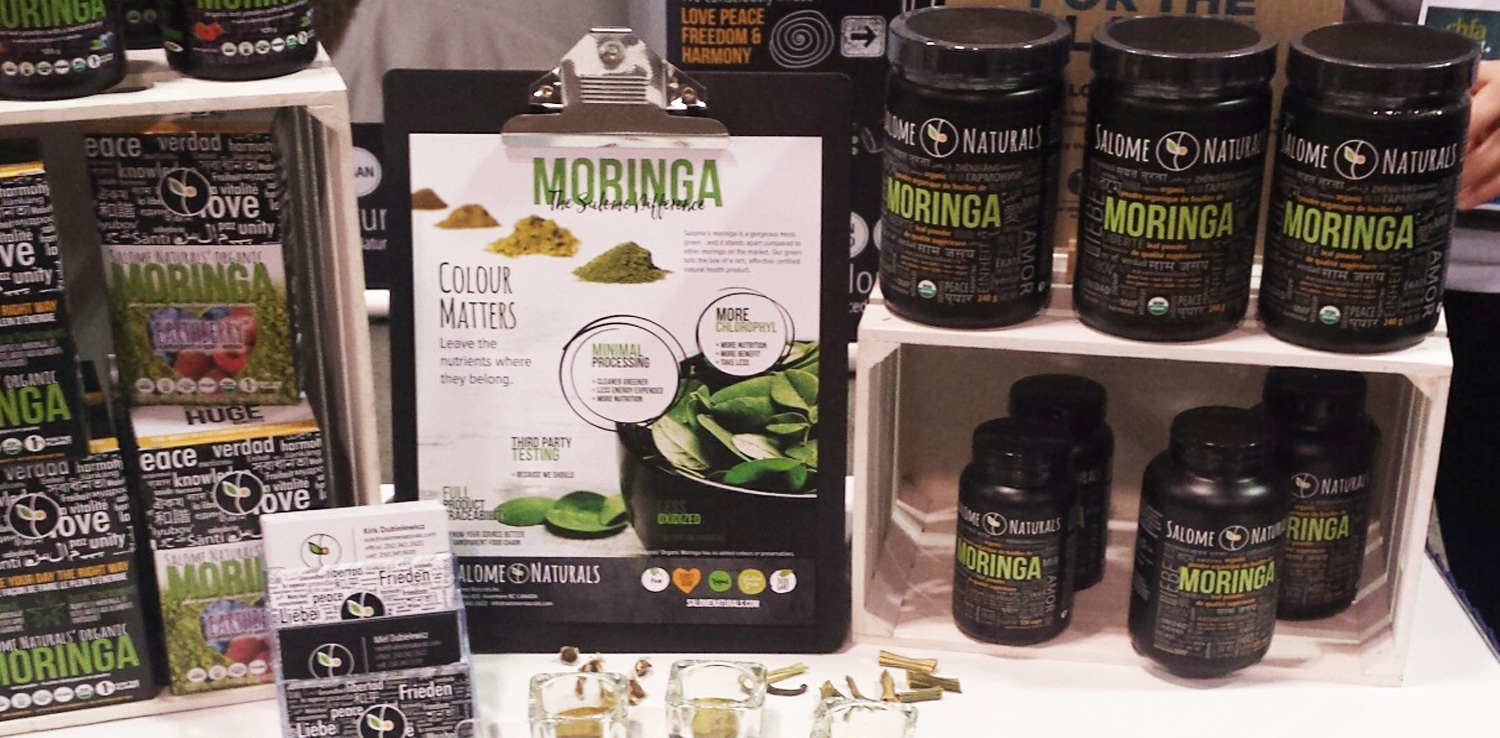
What the Heck is Moringa?
Thank you for your excellent feedback on my What the Heck is series. I love finding and investigating new ingredients and foods, then giving you the 411 on them. Next in line is moringa! What the heck is moringa? Moringa oleifera is an angiosperm plant that has been used as food and medicine in Eastern countries (e.g., India, Pakistan, and Nepal) throughout history.
According to the Food and Agriculture Organization of the United Nations (FAO), the Moringa tree (also called drumstick tree, horse radish tree, ben oil tree and miracle tree) has multiple uses because all parts of the Moringa tree (i.e., bark, pods, leaves, nuts, tubers, roots, and flowers) are edible (1).
Applications
Moringa is mainly used as a supplement or an ingredient in further processing. The leaves can be ground into powder. The seeds (peeled and green) have many uses as well: They can be roasted or powdered and added to soups, stews, casseroles, and sauces; dried and added to bread mixes; pressed to make Moringa oil and used to purify water. Moringa powder is sold directly to consumer to be used as a supplement in smoothies and teas. Companies are using moringa as an ingredient in energy shots, bars and speciality teas. It is suggested that moringa leaves keep its nutritional value whether they are raw or processed.
Potential Health Benefits
Moringa has been gaining its recent popularity by being featured on popular TV shows (the View and Dr. Oz), and entertainment magazines (the New Yorker, Huffington Post, Vogue, Forbes) claiming that moringa is the new super food because of its nutritious profile.
Immune Health
It is stated moringa is high in protein, iron, vitamin C and has antimicrobial, anti-inflammatory, antidiabetic, and anti-cholesterol properties. However, the research studies to date are mainly animal or in vivo models; and we know the best research to identify a “dose response” needs include a number of human trials in both well and disease. Human studies are limited for moringa and further investigation is necessary. For this blog, I’m sharing some potential immune health benefits, and as usual I recommend you proceed with caution, as we discover more moringa facts through well designed clinical trials.
Antioxidant levels
A study, that was published in the Journal of Food Science and Technology in 2014 investigated moringa oleifera and its effect on antioxidant profile and oxidative stress (2). 90 healthy postmenopausal women (45-60 years of age) participated in the study and were divided into 3 groups: 1) supplementation of 7g of Moringa leaf powder, 2) supplementation of 9g of amaranth powder and 3) no supplementation. The results showed that taking 7g of Moringa oleifera leaf powder every day for 3 months significantly increases blood antioxidant levels: serum retinol (8.8%), serum ascorbic acid (44.4%), glutathione peroxidase (18%), and superoxide dismutase (10.4%).
Iron Levels
Another potential health benefit of moringa oleifera is its effect on anemia, and the blood profile. According to an article that was published in the journal of Food Science and Human Health (3), moringa oleifera leaves are said to provide 25 times more iron than spinach. A study, that was published in the Belitung Nursing Journal in 2017 (4) looked at moringa oleifera on blood profile. Thirty postpartum women participated in the study, and were divided into 2 groups: intervention (received a Moringa leaf capsule and iron tablet) and the control (received iron tablet). Results showed that there was a significant effect on: hemoglobin, hematocrit, erythrocyte, and thrombocyte.
Potential Blood Sugar Regulator
Another potential health benefit of moringa oleifera is its effect on hypoglycemia. According to an article that was published in 2010, Moringa oleifera could have an influence on type 2 diabetes (5). The study consisted of 55 diabetic men and women, and agreed to consume either: 1) 8g of Moringa oleifera leaf powder and 6g of Azadirachta indica seeds powder or 2) control for 40 days. Results showed that there was a significant reduction in fasting blood glucose, post prandial blood glucose levels as well as blood lipid levels in the treatment groups, compared to the control.
Industry Perspective
When I attended the CHFA show in September in Toronto, I met Miel Dubielewicz co-owner of Salome Naturals. Meil provided me with her industry insights as she has been working with moringa for over 10 years. Miel explains, “We do moringa different in which we organically grow the trees and allow the leaves to fully mature, dry them perfectly and lock in the nutrients. Our moringa is grown using mature moringa leaves which are only harvested 2-3 times annually while most moringa is harvested every 6 weeks to two months. We allow moringa to reach full maturity and this way the tree is able to flower and is also higher in nutritional/antioxidant value. The average supplement cost per person is roughly 25 to 75 cents a day depending on the form and brand chosen.”
Moringa Bottom-line
Based on human research studies to date, we don’t know the exact “dose response” of moringa for both well and disease. Plus more industry research is needed regarding the bioavailability of the moringa nutrients in both the raw and processed forms. And as always I highly recommend seeking advice from a credible health professional with scientific expertise regarding the metabolism of supplements like moringa to assist you if you want to add it to your nutrition strategy.
I’d love to assist your company to get into the latest food trends or speak at your upcoming event to share my experience as a food expert and entrepreneur. Click here to learn more.
References:
- Traditional crop of the month. Food and Agriculture Organization of the United Nations. Retrieved from: http://www.fao.org/traditional-crops/moringa/en/
- Kushwaha S, Chawla P, Kochhar A. Effect of supplementation of drumstick (Moringa oleifera) and amaranth (Amaranthus tricolor) leaves powder on antioxidant profile and oxidative status among postmenopausal women. Journal of Food Science and Technology. 2014; 51(11): 3464-3469.
- Gopalakrishnan L, Doriya K, Kumar DS. Moringa oleifera: A nutritive importance and its medicinal application. Food Science and Human Wellness. 2016; 5(2): 49-56.
- Estiyani A, Suwondo A, Rahayu S, Hadisaputro S, Widyawati MN, Susiloretni KA. The effect of moringa oleifera leaves on change in blood profile in postpartum mothers. Belitung Nursing Journal. 2017; 3(3): 191-197.
- Kumari J. Hypoglycaemic effect of moringa oleifera and azadirachta indica in type 2 diabetes mellitus. The Bioscan. 2010; 5(2): 211-214.


